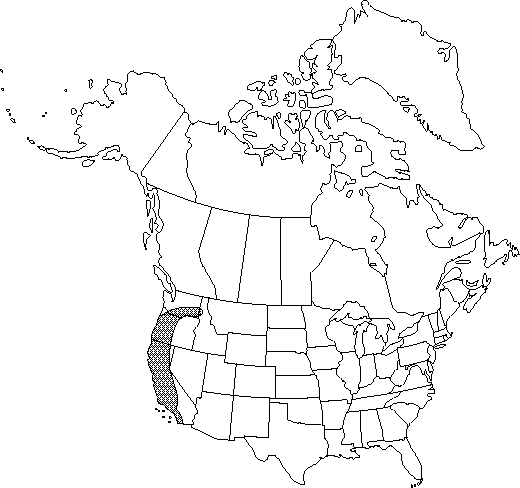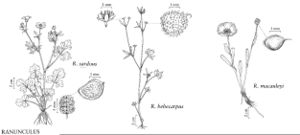familyRanunculaceae
genusRanunculus
subgenusRanunculus subg. Ranunculus
sectionRanunculus sect. Echinella
speciesRanunculus hebecarpus
Ranunculus hebecarpus
Bot. Beechey Voy., 316. 1838.
Illustrated
Treatment appears in FNA Volume 3.
Stems erect, pilose. Basal and lower cauline leaf blades cordate-reniform, deeply 3-parted, 0.6-2.3 × 1.2-3.5 cm, segments undivided or 2-4-lobed, base shallowly cordate, margins entire or 2-4-dentate, apex of ultimate segments acute. Flowers pedicellate; receptacle glabrous; sepals 5, spreading, 1.1-1.8 × 0.5-1 mm, pilose; petals 0-5, 1.3-2 × 0.3-0.7 mm. Heads of achenes discoid, 4-6 × 3 mm; achenes 4-9 per head, 1.7-2.3 × 1.7-2 mm, faces and margin papillose, each papilla crowned with hooked bristle, otherwise glabrous; beak lanceolate, hooked distally, 0.5-0.7 mm.
Phenology: Flowering spring (Mar–May).
Habitat: Grasslands, open woodlands, and chaparral
Elevation: 50-900 m
Distribution
Loading map...

Calif., Idaho, Oreg., Wash., Mexico (Baja California).
Discussion
Ranunculus hebecarpus is native to western North America.
Selected References
None.
Lower Taxa
None.
